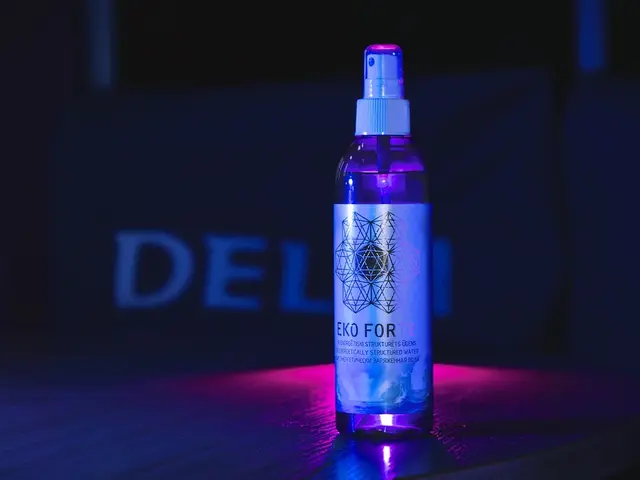Joint Inflammation (Oligoarthritis): Signs, Causes, and Remedies
Oligoarthritis is a type of juvenile idiopathic arthritis (JIA), a condition characterized by inflammation in one to four joints, primarily affecting children and teenagers. This autoimmune condition, where the immune system mistakenly attacks healthy tissue, can lead to various complications if not promptly diagnosed and treated.
What is Oligoarthritis?
Oligoarthritis involves four or fewer joints, typically large joints such as the knees, elbows, and ankles. It often presents in an asymmetrical pattern, meaning different joints on each side of the body may be affected.
On the other hand, polyarthritis affects five or more joints, commonly smaller joints like the metacarpophalangeal (MCP), proximal interphalangeal (PIP), wrist, and metatarsophalangeal (MTP) joints. Polyarthritis is more likely to be symmetrical, affecting the same joints on both sides of the body.
Symptoms of Oligoarthritis
Oligoarthritis is characterized by persistent joint swelling, pain lasting weeks or months, morning stiffness especially after periods of inactivity, and limited range of motion in affected large joints. Children may exhibit limping and joint warmth. A serious complication of oligoarthritis is uveitis, inflammation inside the eye, which can reduce vision.
Progression of Oligoarthritis
Oligoarthritis generally has a slower progression and milder course compared to polyarthritis. However, it carries a risk of complications like uveitis. It may remain limited to the affected joints or, in some cases, evolve into a more extensive form.
Diagnosis and Management of Oligoarthritis
Diagnosis of JIA can involve physical examination of joints, skin, movement, eyes, lymph nodes, and abdomen. Blood tests can be conducted to check for the presence of certain antibodies or markers indicating inflammation. Imaging tests such as X-ray, ultrasound, or MRI scans can be used to assess inflammation, bone structure, and joint damage.
Nonsteroidal anti-inflammatory drugs (NSAIDs) are the initial treatment for all types of JIA. Treatment for oligoarthritis may also include disease-modifying antirheumatic drugs (DMARDs), biologics, physical therapy, strengthening and flexibility exercises, assistive devices, low impact exercise, nutritional support, and surgery.
Possible Risk Factors for Oligoarthritis
Possible risk factors for JIA include viral or bacterial infections, exposure to antibiotics in early childhood, and cesarean section delivery. Factors that can worsen the outlook for eye-related issues of oligoarthritis include the presence of antinuclear antibodies, being younger than 6 years old, and being female.
Complications of Oligoarthritis
Uveitis is a potential complication of oligoarthritis and can cause severe permanent damage, leading to visual impairment or blindness. Oligoarthritis may also lead to differences in leg length and joint contractures.
In conclusion, early diagnosis and prompt treatment for oligoarthritis can help prevent long-term joint damage and maintain joint function. It is crucial to consult a healthcare professional for accurate diagnosis and personalized treatment plans.
[1] Arthritis Research UK. (2021). Oligoarthritis. Retrieved from https://www.arthritisresearchuk.org/arthritis-information/conditions/juvenile-idiopathic-arthritis/oligoarthritis.aspx [2] National Health Service (NHS). (2021). Juvenile idiopathic arthritis (JIA). Retrieved from https://www.nhs.uk/conditions/juvenile-idiopathic-arthritis/ [3] American College of Rheumatology. (2021). Classification Criteria for Juvenile Idiopathic Arthritis. Retrieved from https://www.rheumatology.org/Portals/0/Files/JIA-Classification-Criteria-2010.pdf [4] Arthritis Foundation. (2021). Juvenile Idiopathic Arthritis (JIA). Retrieved from https://www.arthritis.org/diseases/juvenile-arthritis [5] Mayo Clinic. (2021). Juvenile idiopathic arthritis (JIA). Retrieved from https://www.mayoclinic.org/diseases-conditions/juvenile-idiopathic-arthritis/symptoms-causes/syc-20356329
Read also:
- Inadequate supply of accessible housing overlooks London's disabled community
- Strange discovery in EU: Rabbits found with unusual appendages resembling tentacles on their heads
- Duration of a Travelling Blood Clot: Time Scale Explained
- Fainting versus Seizures: Overlaps, Distinctions, and Proper Responses








